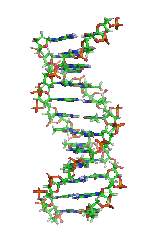A member of the governing board of the
$3 billion California stem cell agency is weighing in on an item on
the California Stem Cell Report that called for public disclosure of the financial interests of the scientific reviewers, who make 98
percent of the decisions on awards by the agency.
Francisco Prieto, a Sacramento
physician and a patient advocate member of the board, said in an email:
“ It seems to me there's a bit
of 'damned if we do and damned if we don't' here. If the ICOC (the
agency governing board) decides to listen to some of the members of
the public who come to our meetings and overrule a recommendation of
the Grants Working Group(GWG), we're slammed for letting emotion trump
science, or bowing to special interests. If we just accept the
rankings of the GWG and approve all their recommendations, we're
criticized for not being truly independent. I think we don't do
it often (for good reason) but should and do retain the right to look
at other factors besides those our scientific reviewers do, and make
our own decisions about funding. We are ultimately responsible, not
the scientific reviewers.
“As for the issue of their
disclosure of personal conflicts of interest, from what I've read of
the NIH processes, ours are no less strict. The NIH requires that
reviewers disclose any conflicts to their institutions which I
believe must disclose them to the NIH, but I have not seen anything
requiring them to disclose all their personal financial & other
interests publicly, as we (ICOC members) have to. When we were
assembling our group of reviewers initially, the fear was that many
of the best scientists would turn us down if we required them to make
the kind of personal disclosures we have to. I don't know how many we
might actually lose if that were the case, but as you know we do
require them to disclose to CIRM, and they have to leave the room
when any application for which they have a conflict is discussed.”
Our take: Prieto is right about the
board being perched on the horns of a dilemma, which has a lot to do
with Proposition 71, which created the agency, and American
scientific traditions, which place an extraordinary value on the
“integrity” of the review process. In this case, integrity refers
to adherence to reviewers' scientific judgments.
Proposition 71 placed the legal
authority for grant approvals in the hands of the CIRM board, which
has overridden decisions by reviewers in only 2 percent of the cases
since 2005. However, that was enough, with at least one high profile
case coupled with public appeals, to cause the Institute of Medicine
to raise concerns about the integrity of the CIRM grant review
process. Traditionally, peer reviewers are deemed to be the most
capable of making the scientific decisions about grant applications,
rather than a board appointed by University of California chancellors
and elected state officials.
Yet, if the board concedes the
decisions to the grant reviewers, state law is likely to require
public disclosure of their financial interests, a move that the board
has opposed for years. Former CIRM Chairman Robert Klein repeatedly
advised the board during its public grant approval processes that
reviewers' actions were only ”recommendations” and that the board
was actually making the decisions. However, it has long been apparent
that the reviewers were making the de facto decisions. A CIRM memo in
January confirmed that, producing the 98 percent figure.
The issues involving disclosure by
reviewers, integrity of peer reviews, the language of Proposition 71
and state law are difficult and may, in some cases, be at odds.
However, it makes little difference
what the NIH is doing. It is a much different organization and has
had a history of conflict of interest problems that it has been
trying to work through.
The trend in the academic and
scientific research community has been towards more public disclosure
rather than less because of many well-documented instances of
problems. What is at stake is the public's faith in scientific
research and the integrity of public institutions.
Our thanks to Prieto for his comments
on this important subject.
 Source:
Source:
http://feedproxy.google.com/~r/blogspot/uqpFc/~3/OlA8vhJTIsA/cirm-director-prieto-on-disclosure-of.html
